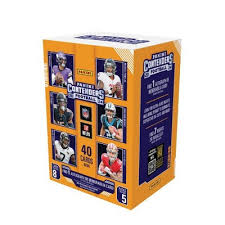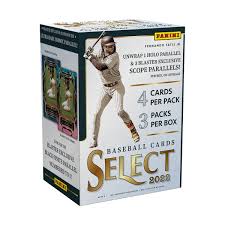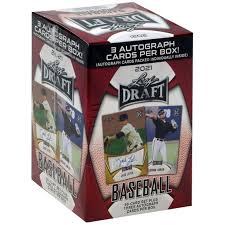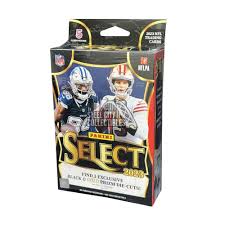

An organization named the Tony Ranze Foundation provided research to help authenticate a game-worn Michael Jordan jersey and place it in two specific games.
It helped bump the valuation of the jersey from $26,896 to well over a million. However, the organization is allegedly a fraud. Indeed, it was only created after the jersey had been established.
In addition, there are further signs that the jersey was not worn in the relevant games. We tell you how MeiGray Authenticated may have falsely authenticated a scam jersey.
An unknown individual purchased a game-used Michael Jordan jersey for $26,000 from Grey Flannel Auctions. At the time, the jersey had not been photo-matched with anything worn by the Chicago Bulls great in a specific game. Therefore, it sold at a modest sum for an item affiliated with arguably the best-known basketball player.
However, the buyer hoped to match it with a specific game. Therefore, he sent it to MeiGray, considered by many to be the most respected authority on game-worn jerseys. When submitting the jersey, the representative for the owner included corroborating evidence.
Namely, two photos of Michael Jordan wearing that same jersey in Games 3 and 4 of the 1996 Eastern Conference Finals. This is an even bigger deal than you might think. There isn’t a single known jersey from the Jordan’s 1996 playoff run. That was an incredible year when the Bulls won their fourth title and started the historic course that would lead Jordan to his repeat of the threepeat (the second run of three straight championships for Jordan).
Since a game-worn jersey from this series is rare and a big deal, others searched for confirmation but came up empty-handed. To explain where these previously unknown photographs came from, the representative claimed to have purchased their photos from the Tony Ranze Foundation.
The company received two developed pictures confirming that Jordan had worn this same jersey in those two high-profile games. However, they did not have access to the negatives. That is significant since it is much easier to forge a developed photo than a corresponding negative.

As we all know, game-worn items tend to have a much higher value than replicas or even items worn or used by the athlete elsewhere. In recent years, we have seen separate valuations for items that are believed to have been used by an athlete and those that have been photo-matched.
A jersey or item that has been photo-matched is one that can be identified beyond a reasonable doubt as having been used in a specific game. As the word uniform would suggest, what players wear in games is designed to look utterly identical, aside from the names and numbers (of course). Therefore, telling one jersey apart from another can be a challenging prospect.
Analysts try to differentiate between items by focusing on slight flaws and imperfections. They may see an area of discoloration or a loose thread. If they can match the tell-tale differences, it will boost the item’s value significantly.
And understandably so. It’s much more impressive to tell your friends, “This is the uniform Babe Ruth wore in game 3 of the 1932 World Series,” than just, “I was told Babe Ruth wore this uniform.” Indeed, we recently saw a photo-matched Babe Ruth bat go for over a million dollars.
As the distinction between photo-matched and non-photo-matched memorabilia has become standard in the industry, the differences in value have sharpened. It is not too different from the process by which vintage PSA 10s are often worth several times the amount of comparable PSA 9s. Indeed, the differences can be even more severe.
In the case of this Michael Jordan jersey, the value of the items without a photo match is estimated at around $26,896.
Meanwhile, his most expensive photo-matched jersey sold for $10.9 million. It matched the jersey MJ wore for Game 1 of the 1998 NBA Finals, where the Jazz got their hopes up by defeating the Bulls 88-85. But of course, Chicago ended up winning the series 4-2, and Jordan won series MVP.
The claim that the Michael Jordan jersey purchased by the collector was based on two pictures allegedly purchased from the Tony Ranze Foundation.
The MeiGray company stated, “The two photos MeiGray matched the Jordan jersey to came from the Tony Ranze Foundation. Ranze was a photographer who photographed Games 3 and 4 of the 1996 East Conference Finals…With the assistance of the Tony Ranze Foundation, MeiGray acquired prints and photos of the original slides from which the photos came. All the slides were labeled with the game dates and copyrighted 1996 by Tony Ranze.”
However, that theory begins to fall apart under increased scrutiny. There are plenty of pictures of Michael Jordan from the 1996 Eastern Conference Finals. As always, some of the best and most focused can be purchased from Getty Images.
An analysis of the jerseys that Jordan wore in those games, using high-quality authentic pictures, reveals that while the superstar did indeed wear the same uniform for Games 3 and 4, it does not match the one portrayed in the Getty Images pictures. A video posted by Zhenghao Z on YouTube demolishes the claim that the jersey authenticated by MeiGray is the one Jordan was wearing in the aforementioned games.
The first video got Zhenghao Z over 1,000 views. I recommend you watch it. There are some significant differences between the authenticated jersey and the one you can see Jordan wearing in high-resolution Getty Images, for example.
The distance between the 2 and 3 on Jordan’s jersey is wider in the pictures from Getty rather than the ones provided by the foundation. In addition, the letters J and N are closer to the number 23 on the Getty pictures.
One clue that Zhenghao Z found was related to Phil Jackson’s tie. The coach hardly ever wore the same tie more than once to a game. He also changed jackets quite often. Therefore, as the video noted, “the probability of repeating the same suit and jacket combo is very low.”
He found that Jackson did wear that suit and tie in Game 3 that are depicted in the pictures allegedly from the Tony Ranze Foundation. Meanwhile, other evidence confirmed that the picture was taken at that game. And, of course, Ranze took photos of that game. Therefore, it’s easy to see why these photos confirm that MJ wore this jersey in the game.
However, a closer look shows that the Logoman on the jersey is off. Notably, Zhenghao Z noticed that the mesh holes are aligned straight, even when the uniform is vertical. MeiGray responded to this criticism with a somewhat condescending message:
“Regarding Getty Image #487210917, which individuals have speculated is not a match, this image is inconclusive. I agree that if you look at the area near the top left of the front “2”, the mesh holes look off. However, when trying to match the jersey, the shot needs to be viewed as a whole; the jersey is bunched up as Jordan has his hands on his sides. Notice the “S” sitting tight to the second “L” and the undulation on the bottom of both the “Ls.” With the jersey pinched or bunched up, the mesh holes are viewed differently than if the jersey was flat.”
But as Zhenghao Z notes, that does not explain the blurred edges you can see on the numbers and sides of the jersey.
Four days later, they called out the company with a second video, demanding a response from MeiGray. He speculated that for the company, “it was a point of pride to be able to authenticate a Jordan jersey with a photo that could not be found online.”
That finally got the attention of the authenticating company. We will discuss their somewhat belated reaction below.
But that wasn’t the only problem with the authentication of the Michael Jordan jersey. Many questions about the Tony Ranze photographs used for authentication have been raised. Tony did indeed photograph games 3 and 4 of the series. And many of those photos appear on Getty Images.
The Tony Ranze Foundation did not have a website until July 2023. The website is currently down. That is many years after the death of the individual in question (more on him later), in 2006. The website was also created after the jersey was purchased and before the foundation authenticated the Michael Jordan jersey.
It does not appear that the Tony Ranze Foundation was created by anyone even loosely affiliated with the family. Tony’s son, Nic Franze, said ,“I was my father’s executor, power of attorney, everything. I sat in on all meetings he had financially and legally the last couple of years and often was the primary caregiver as we took him to Little Rock, Arkansas, for treatments. There is no way he wouldn’t have told me about this.”
He added, “His only philanthropy was his damn kids. Joe and Kaitlyn were in high school, and his only concern was getting them to adulthood and off into life OK.”
In short, the Tony Ranze Foundation was likely created by the individual who bought the Michael Jordan jersey to pump up the price. The evidence is circumstantial but incredibly strong.
Someone took an original picture from Game 3 of the Eastern Conference Finals and placed a photo of the same jersey on it using Photoshop. While the jersey does not match the one used in the game, all the rest of the details do. Putting a jersey on top of another photo is a pretty simple process. However, with current technology, there are telltale signs if you know where to look.
The difference between a photo-matched jersey and one that has not been can be several millions of dollars in value, especially if the item can be matched with a very memorable game, like a crucial playoff matchup. Therefore, in some cases, there is an incredible incentive to find a match that can lead to wishful thinking in interpretation. After all, this is more of an art than a science. But there is also a solid motivation to fudge the data.
It is worth noting that the photo-matching is only as good as the available photos. Many are in the public domain and are well known. But there are also infinite privately owned photos taken by fans attending games.
However, they are generally considered to be less trustworthy. The gold standard is AP or Getty Images. Any picture appearing on one of those mainstream and trusted sources is more likely to be authentic.
In addition, most of the photos they have on file are high-resolution. That can make all the difference since authentication can depend on the angle of a single strand of material.
In theory, these are used as evidence just as credible as items that appear in major news outlets and databases. Indeed, these have been used to confirm some of the high-priced things that have sold recently.
As we all know, Photoshop has been available for a long time. Therefore, fudging some of these pictures is entirely possible. But more recently, the technology used to deep fake pictures has reached an incredibly sophisticated level.
With the high values involved and the high potential for cheating, there is a greater need than ever for reliable and respected actors to confirm the authenticity of photographs.
Therefore, we have serious questions regarding what MeiGay thought when they authenticated that jersey. The standard process of authentication starts with the most well-known and verifiable photographs.
It appears that MeiGay reversed that order and first looked at photos from a less trusted source. Indeed, if they had used the Getty Images pictures as confirmation, it is hard to believe that the New Jersey-based company would have authenticated the MJ jersey.
To top it off, there is video footage of that game, and none of it seems to confirm that the jersey is authentic.
MeiGray based their authentication on photos they allegedly received from the Tony Ranze Foundation. But who was Tony Ranze? Ranze was the director of photography for the Lakeland Ledger. The Ledger is a veteran newspaper based in Lakeland, Florida (about 35 miles to the east of Florida).
It was founded as the Lakeland Evening Ledger in 1924. His photography skills were top-notch so you can find Tony Ranze’s credits in AFP and Getty Images. Tony covered “multiple space shuttle launches, Super Bowls, Daytona 500 auto races, and Hurricane Andrew. In 1990, Ball State University gave him the Joseph Costa Award for Courtroom Photography.”
The fabulous photographer passed away in 2006 after a four-year battle with multiple myeloma, a form of cancer that forms in the plasma cells.
The Tony Ranze Foundation does not appear to be real. It appears to have been created to drive up the price of a jersey. But even the most respected actors in the photo-matching business seem to have made some serious mistakes.
Perhaps the best-known actor in the business is MeiGray. Two friends formed it from New Jersey, Barry Meisel and Bob Gray.
The buyer of this jersey sent it to the folks at MeiGray. They matched the item with the one Jordan wore in Games 3 and 4 of the 1996 Eastern Conference Finals against the Orlando Magic.
The company has admitted that it made a mistake. In their first public announcement, Barry Meisel of MeiGray announced, “We have concerns regarding the authenticity of the photographs provided to us. We are currently doing further research on those images. In the meantime, we have frozen our letter of authentication and have reached out to the buyer to inform him of that change.”
According to their most recent statement, “On Thursday, MeiGray froze its authentication of MeiGray Authenticated No. 160092, the 1995-96 Chicago Bulls Michael Jordan red jersey. MeiGray received new information on Thursday questioning the legitimacy of the evidence used to authenticate the jersey. We are continuing to research this new information.”
The case of this Jordan jersey may appear to be a significant blow to jersey authentication. It certainly does not inspire confidence when the biggest name in game-worn authentication drops the ball like this.
However, it isn’t. If anything, it shows how much evidence we have to draw from, especially regarding high-profile and relatively recent games. Therefore, we can hope that organizations like MeiGray will learn from the lessons of this case.
But there are some serious long-term problems. AI and deep fake technologies are improving and may be able to fool even the most eagle-eyed experts. And with massive amounts of money riding on the authentication of game-worn jerseys and their photo matches, the temptation will be too much for bad actors to try again.
I deep-dove on Fanatics Collect so you don't have to (but should you?)
Panini is launching a WNBA Product at $30,000!?
Topps Chrome 2024-25 Basketball: Honest Review and Notes
Did you know this SECRET about PSA slabs? #sportscard #tcg
5 EASY tips to make more money on eBay sports cards.
I opened a sports card mystery box and found something AWESOME inside
The SAD story of Collectable. What went wrong? (The Downfall Fractional Sports Card Investing)
what was Panini doing? 🙄





2022 Topps Heritage Baseball Blaster Box Configuration: 7 Packs per Box – 9 Cards per Box. Plus 1 extra pack.











Keep up on breaking Sports Card News, our latest articles, product specials and exclusive content with expert analysis of hobby trends.

© Copyright 2025 - All rights reserved Cardlines.com / Media Techs LLC - Sports Card News, Reviews, Releases and BREAKS - #thehobby.
Important: When you click on links to various merchants on this site and make a purchase, this can result in this site earning a commission. Affiliate programs and affiliations include, but are not limited to, the eBay Partner Network.
I Tested eBay Auction Promotions So You Don’t Have To!
Cardlines June 30, 2025 7:01 pm